If you’ve seen a movie at this year’s New York Jewish Film Festival, we’d like to publish your review—and maybe even give you an award for it. Read our contest guidelines here, and readers’ opinions below.
Congratulations to Joy Goldstein for her review of Waiting for Armageddon, the Grand Prize winner of our review contest!
BEING JEWISH IN FRANCE
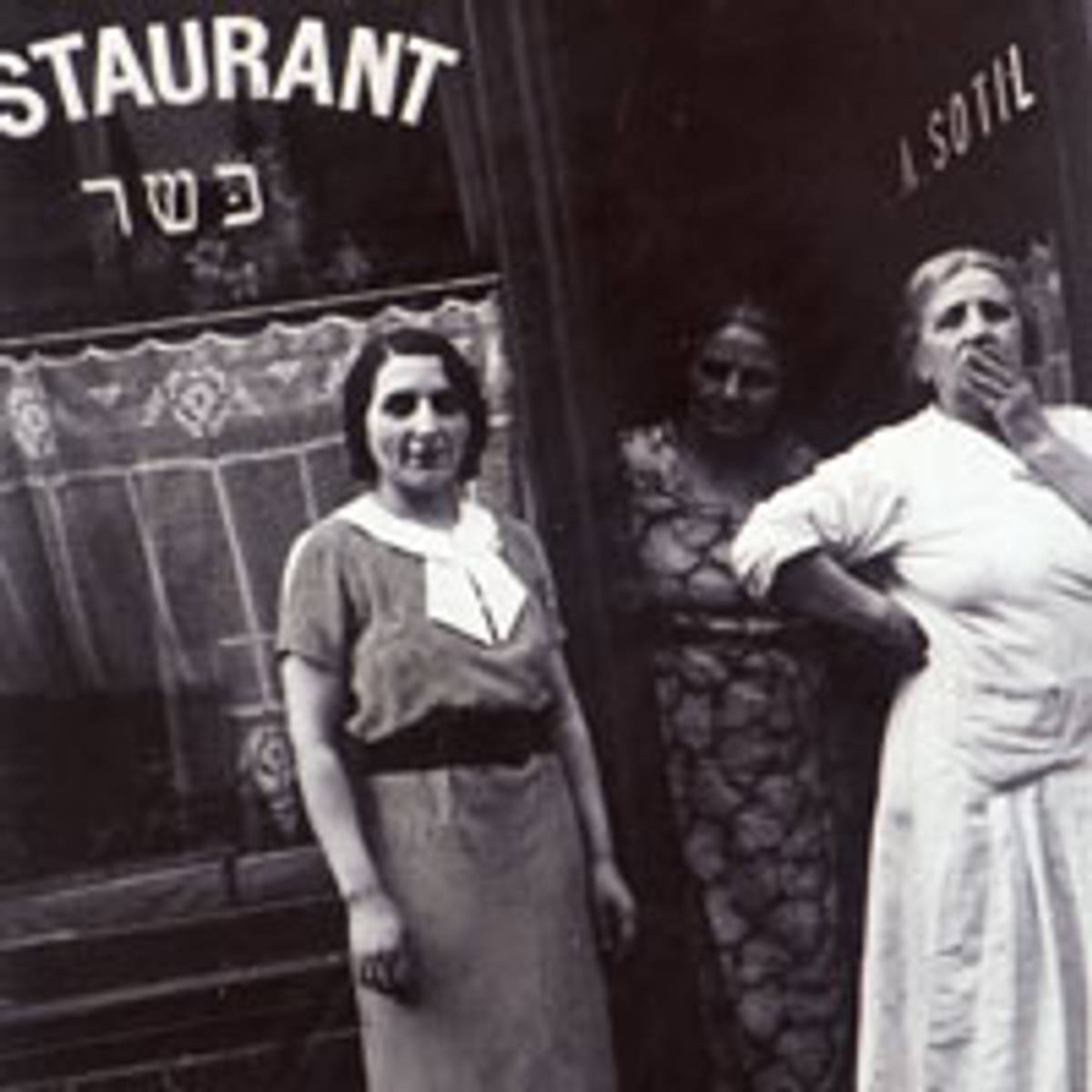
As a French Jew, born soon after World War II to a family of Turkish origin, I found the film Being Jewish in France, by Yves Jeuland, to have great resonance. The sweeping three-hour film relates with mastery and sensitivity the history of Jews from the Dreyfus Affair to the present time and reflects on the significance of Jewish identity in France. The film is beautifully crafted and follows a thread, woven from the memories of 13 witnesses, of diverse origins and from all horizons of the arts, education, politics of Jewish life, all united by their engagement with the “Jewish condition”. While their memories are personal, of their families, of their immigration and dispersion, memories of joy and suffering, they build the common ground of a shared memory, which makes history. Indeed the film shows with great clarity how memory and Jewish identity are linked to the destiny of France. Jews, a small group in the midst of a great nation, a republic in which Jews are citizens—the first nation to give them this right—are a symbol, an emblem of the democracy that France aspires to be. The destiny of the French Jews follows the destiny of the French people as a whole. Indeed, as in the words of Elie Barnavi, former ambassador of Israel in France, “the manner in which a society treats its minorities is emblematic of its democracy. Whenever democracy shows symptoms of disease, Jews suffer”. Therefore we see the pattern of anti-Semitism and reparation alternate several times in the history of the Jews in France. The film’s strength comes from the combined and perfectly orchestrated use of these personal stories and, in counterpoint, a wealth of archival material—films, documentaries, music, news reports, and personal photographs. These images lead us through more than a century of the intertwined history of France and its Jews. The film uses the device of a “Yellow Jewish light” that traverses the scenes and connects them throughout this collective history.
In the first part of the movie covering the events from the Dreyfus affair to Vichy, we see a France agitated and reacting to injustice and racism. The Dreyfus affair will end with the vindication of Dreyfus and the apparent end of anti-Semitism. However, it will breed, in revenge of the past, further anti-Semitism, as it appears in the Vichy government and its anti-Semitic policies. The Vichy government participates fully in the persecution of Jews and their transfer to Concentration Camps. Once the war ends, we see the Jews returning to France, as in the moving testimony of Marceline Loridan deported to Auschwitz at age 15, who recounts her return with a heart of “stone”. The Jews heal slowly and their healing is aided by the immigration of the North African Jews from Algeria, Tunisia and Morocco and by the birth and resilience of the State of Israel, successfully facing a hostile Arab world. The identity of Jews shifts from French citizen Israelites to “Juifs Francais”. Jewish identity flourishes as multiple archives testify to the flourishing of Jewish identity in the post-war period. While the Jews from the end of the 19th century wanted to be first and foremost French, the Jews at the end of the 20th century want to reaffirm their dual identity. And this is what the second part of movie shows so well: a sense of double identity. “I have two loves,” proclaims a sign carried by a French Jew ready to make Aliya, “la France et la Palestine”. Israel provides les “Juifs Francais” the dual identity they seek, a sense of belonging, a cultural and spiritual homeland. One witness remembers her feeling of wonderment at seeing a product of Israel for the first time: beautiful, fragrant Jaffa oranges. It is also the time that Chirac publicly acknowledges the responsibility of France to the Jews and as a consequence the “Juifs Francais” feel secure and increasingly integrated in the fabric of French society. However, with the rising of attacks against Jews in 2000, the burning of synagogues and the threats to private Jewish citizens, the movie ends with the hard question of whether a new anti-Semitism is reappearing coinciding with the ongoing Jewish-Arab conflict and the rise of Arab immigration and Islamic extremism in France. The question is posed. What is a Jew to do in France now? Is there a real rebirth of anti-Semitism at this time using the pretext of Jewish allegiance to Israel? Will the Jews yet again be deemed responsible for all the ills of society, the eternal scapegoats? Despite differences of opinion of its extent, the malaise is acknowledged and lucidly discussed in this landmark film about the Jews of France.
—Joelle E. Gabay
CAMP GIRLS
DRIVING MEN
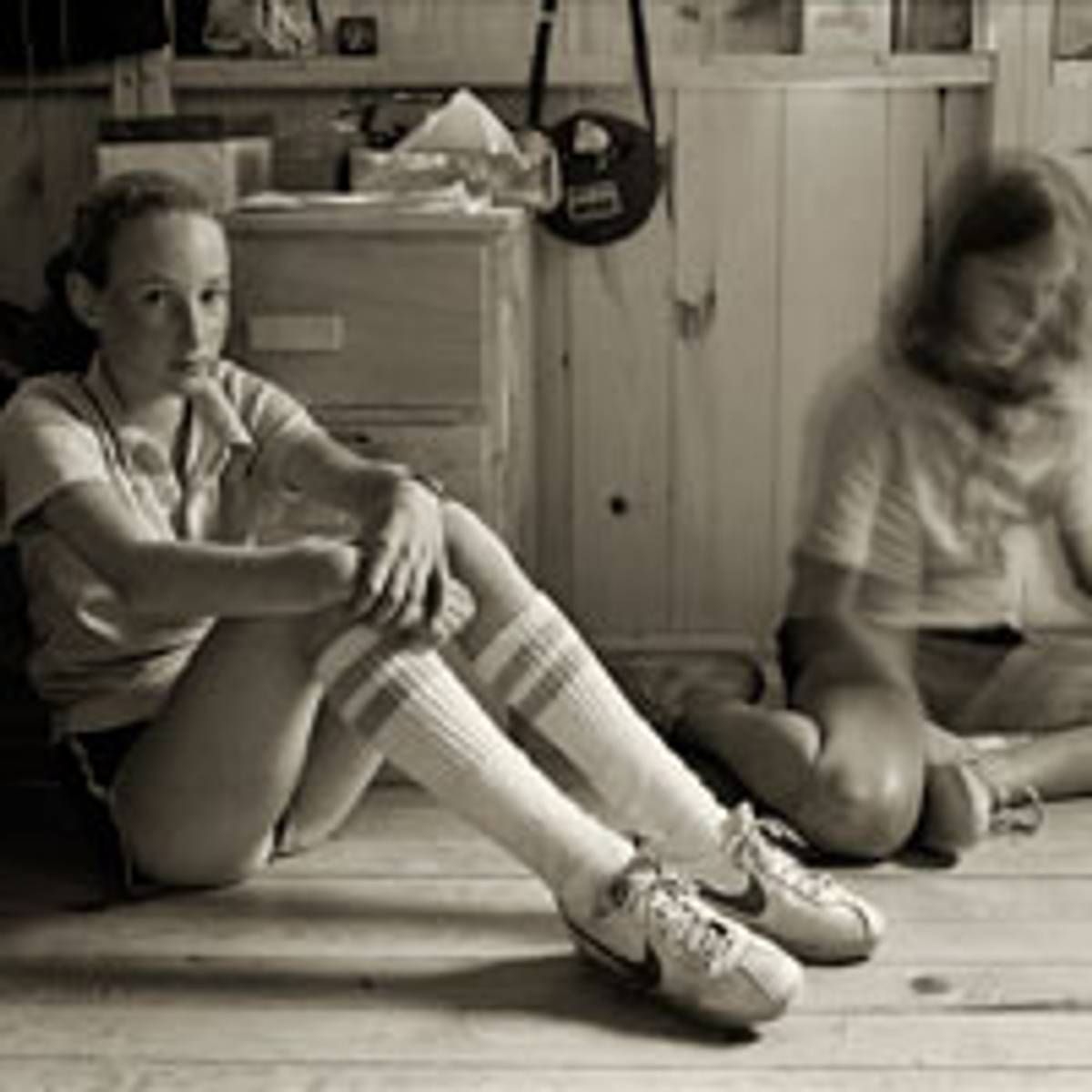
In the summer of 1981 Gay Block took a series of photos of the young girls at Camp Pinecliffe. In her 2008 project, Camp Girls, Block has turned those portraits into a sad, yet hopeful documentary as she catches up with the women these girls have become. Through a series of still photos from the past, and video commentary from the present, Block paints a picture of the human experience as these women reveal what we all eventually figure out: the future is never what we planned, and the past is never as grand as we remember.
Wearing rose-colored glasses the women romanticize their adolescence. The thrills of camp are remembered as greater than they were, and the fears and pains have been glorified as life lessons. There emerges in these women a desire to crystallize the memory of Camp Pinecliffe as a place where they were empowered, accomplished,
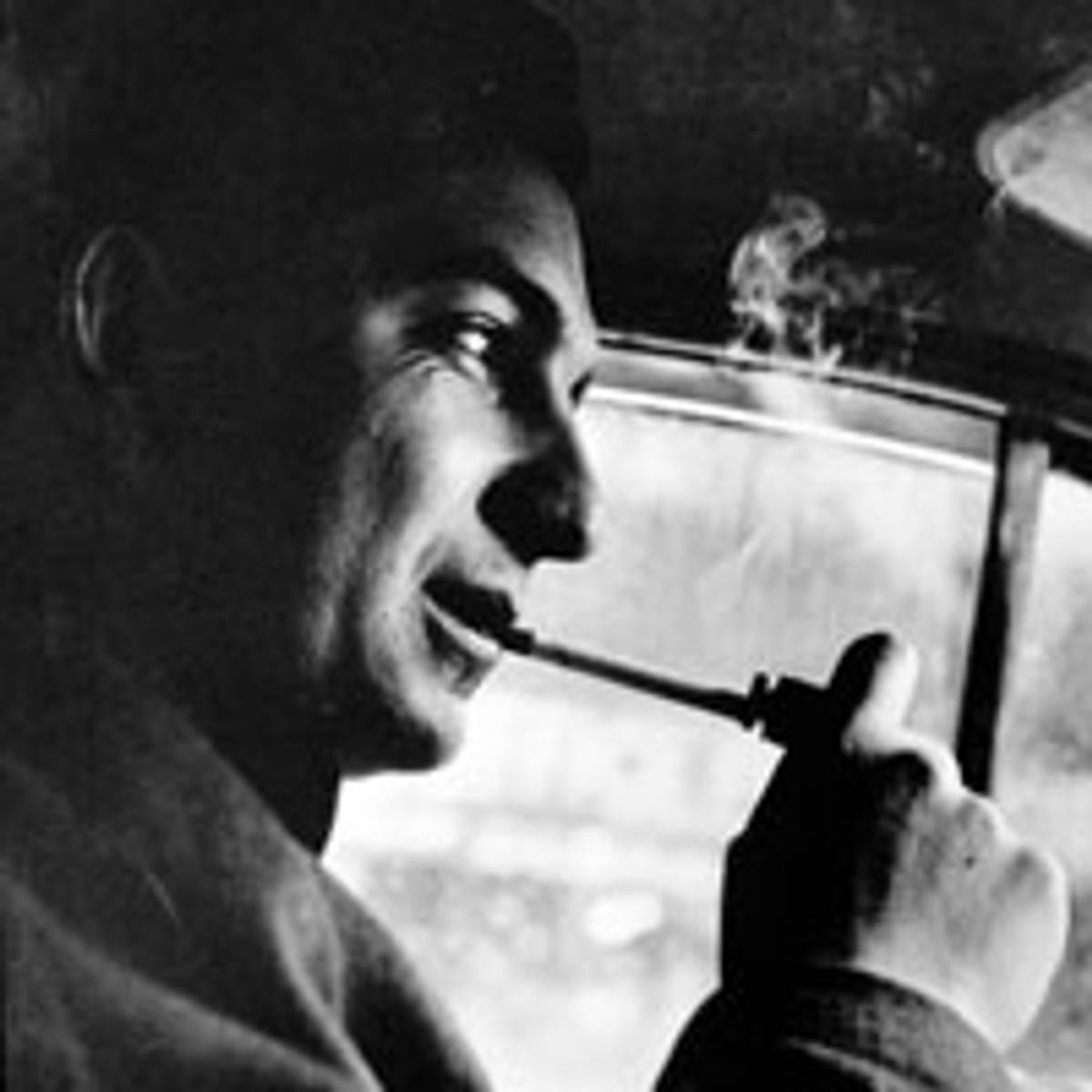
and challenged. It is an effort to hold onto an idealized version of themselves, a person which most cannot seem to find in adulthood. “My life has been like a decade of limbo,” laments one woman. Though pregnant with melancholy, it is a unifying and hopeful admission. I am hard pressed to think of a person that does not feel inadequate or unfulfilled under the burden of adult responsibility. But knowing we are not alone in our struggles is often enough to lighten the load.
Camp Girls keeps anonymous the identity of the women until the credits. It is a device that invites the viewer the find herself among the faces and to take solace in the company of others. It is a project that strikes the perfect balance between telling a specific story and having a much wider purpose and appeal.
In stark contrast to Camp Girls is Susan Mogul’s Driving Men. Screened with Block’s engaging and inviting documentary, Mogul’s project proves nothing more than an exercise in self-indulgence. In this documentary Mogul spends an hour interviewing various men in her life on only one subject: herself. Her goal is to discover herself through the eyes of others, but she holds such a short leash on the conversations that the film only ever reveals what she is comfortable revealing. She wants you to know that she is an intellectual, a feminist, and an exhibitionist. She is in your face and unafraid. She is proud of these traits and is constantly cornering the men into praising her for them.
But there is no value in this film because Mogul continually shies away from topics of substance. People bury insecurities, and if an artist can explore weakness, doubt and fear a viewer can benefit from knowing she is not the only one battling demons. In this way, art has the potential to bring together an increasingly isolated society. Mogul, however, fails to pursue this. She eats up compliments with a spoon but shuts down when challenged. “Why do you feel the need to make films about yourself?” she is asked. After an awkwardly long pause she is only capable of responding with a question. “Would you ask Woody Allen that question?” she retorts, never to revisit the subject again. “Why have you never married?” asks another friend, a question to which he is given no response at all.
Driving Men is a vehicle for Susan Mogul’s ego. She fails to adequately explore any of her own shortcomings, which makes her unrelatable to an audience. And if ever she does admit to an inadequacy it is with the pompous air of a college student claiming perfectionism is a weakness in a job interview.
—Sarah Ferrante
EMOTIONAL ARITHMETIC

Any film with artists the stature of Susan Sarandon, Christopher Plummer, Max Von Sydow, and Gabriel Byrne should be a must see. At least that was my reason for selecting this film from the many choices available. Indeed, I wasn’t disappointed, the cast was outstanding. The movie was provocative even though slow moving.
The plot consisted of a reunion 40+ years later of three former inmates of Drancy, a World War II French transit camp. The audience in playbacks is not exposed to camp brutality, but to the relationships between the children (Susan & Gabriel) and the young adult who protects them (Max).
The film then focuses on their reunion; the lasting effects of their concentration camp experience. Susan is in what appears to be a loveless marriage and is under treatment for anxieties. Her post-traumatic syndrome (PTS) is an obsession with collecting and maintaining detailed records of genocidal incidents. Gabriel who is obviously in love with Susan all these years has never been able to commit to another relationship. Max is a survivor of not only Nazi concentration camps but the communist gulag as well. Max is old and destitute. And Susan has invited him to stay with her permanently, even over her husband Chris Plummer’s objections.
There is no resolution of the conflicts. The characters live on with their hang-ups as they were before the reunion. It is disappointing but there is no melodramatic ending.
I realized after watching this film that this is a very adult picture about the psychological effects of PTS. That for people, whatever the cataclysmic event they experienced, the post traumatic syndrome can be as debilitating as a physical wound.
—Howard Kamin
I realize the late author of the novel was Jewish, but I find it ironical that the major characters were not Jewish. Of course actors can portray people of other ethnic or religious groups. And one character is Irish in the movie as well as the novel. But none of the other performers did not appear authentic as Jews. Furthermore, an Irish kid would not be sent to Drancy and eventually Auschwitz. The Vichy and Nazis went after Jewish kids. So that knocks out the whole premise of the story. The movie was deeply moving despite its flaws. However, trying to have a somewhat happy ending mars the whole thrust of the movie, which shows no one can ever recover from such horrible experiences that both Jews and non-Jews suffered. Ask the children of survivors.
—Mel Berkowitz
EVERY MOTHER SHOULD KNOW

Nir Toib’s elegiac documentary, Every Mother Should Know, illuminates a fascinating schism between generations of Israeli reservists and serves as a sobering reflection on the complexities of Israel’s fragile and imperiled existence. While Israel’s history has been fraught with war and terrorism, the country’s fortitude and perseverance has afforded each new generation a modicum of comfort that prior generations could scarcely imagine. But the result has softened Israel’s resolve in the face of aggression, and just who is to blame for that comprises the backdrop to Toib’s forceful new film.
Toib grimly details, Rashomon-style, the shocking failures that doomed the second Lebanon war in 2006. As such, the film plays as a surprisingly well-timed companion piece to Ari Folman’s acclaimed animated docudrama, Waltz With Bashir, which focuses on the mistakes and guilt associated with Israel’s first Lebanon War. Where Folman employs fever dream visuals to punctuate his themes, Toib uses a decidedly straightforward approach to generally an impactful effect. He occasionally loses focus in a barrage of subjects and anecdotes, and in some scenes employs the service of Vivian Kubrick’s Full Metal Jacket score to gratuitously drive his message across. But such devices nevertheless strike a resonant chord. For where Stanley Kubrick’s Private Pyle was in his own “world of shit,” Israel’s soldiers face their own existential crisis as leaders aim to fight war more antiseptically but only bring about moral crisis instead. On the one hand are elders who essentially liken today’s generation of Israeli soldiers to a Catskills camp gathering, and on the other hand are the young folks who question the resolve of their leaders to let soldiers be soldiers. In the midst of all this, the entire esprit de corps gets threatened, especially as Toib effectively recounts an incident where a recent immigrant from the former Soviet Union fought valiantly in battle but was left injured in the field at length, only to die from his wounds because the military leaders feared further engagement.
Toib’s subjects cover issues that ultimately transcend war and get to the heart of what Israeli society values. These issues strike a poignant note in a society descended from the European ashes of Holocaust, where the instinct to protect the younger generation at all costs is sacrosanct. But what Toib seems to ponder is how can that be reconciled with the messiness of war, which is an inevitable reality of Israeli life, especially when confronting an enemy who uses youth as actual weapons? The result is stark but also hopeful; that Israeli society could offer such a brutally candid assessment of its leaders cannot be undervalued or downplayed. Such self-reflections would likely be anathema in any of Israel’s enemies’ societies, and one gets the feeling that despite Israel’s many faults (which Toib and Folman’s films clearly outline), the inherent humanity and decency of their democracy gives promise that the mistakes of the past are not necessarily doomed to be repeated, or at least can be laid bare for reassessment. From disillusionment, torment and acrimony, the possibility exists to forge new and better values while keeping a healthy skepticism about the realities of war and conflict. With this, Toib’s film has sent a well-timed message to Americans living in the post-Bush reality, where our own societal complacency about war and our own intra-generational differences about sacrifice and heroism simmer beneath the surface. And yet, our culture’s scant engagement with these issues raises a flaw in our democracy: the freedom of indifference. After viewing Toib’s provocative film, clearly every one of us should know.
—Brett Leitner
A REFUSENIK’S MOTHER

Conscription in the Israeli army is mandatory for most Israeli Jews, but what happens if you refuse to go? A Refusenik’s Mother, directed by Ori Ben Dov, follows the story of Shimri Zameret, one of five teenage boys who in 2003 protested their first call to military service. But the perspective of the film belongs more to their mothers, particularly Marit Zameret, who co-wrote the screenplay. Marit struggles with her son’s decision, but never fails to support him through his yearlong detention, a high publicity trial, and another year’s prison sentence. This quietly affecting documentary lets us into living rooms where Israeli politics carry a very personal resonance.
Though the film deals with a highly contentious issue, the images it gives us are fairly understated. Opposition to the refuseniks only emerges in small doses: a man in a car shouting at protesters in front of the National Army Headquarters in Tel Aviv; a mother quietly painting over graffiti scrawled in front of her home; a friend of the family who when asked by Marit, “Do you think boys like Shimri should go to jail,” answers, “For a long time.” There’s nothing remarkable looking about these teenagers in their fleece jackets and sweatshirts, their varying degrees of facial hair. When each one presents his position against military service, you almost have to remind yourself that they’re not participating in a high school debate, but pleading for the right not to be sent to jail.
The scene of the boys’ families bidding them goodbye as they head off to a detention facility also seems somewhat quotidian. You’d think they were going to camp, were it not for the handcuffs. What this understated portrayal does is attempt to normalize a decision that might seem unthinkable. To say no to the demand of military service, the film suggests, is difficult but doable.
In one of the more moving parts of the story, Shimri is home from prison on furlough. Over a meal, Marit tries to find out from her son what it’s like. Shimri doesn’t offer much. Our emotional sympathies are with Marit, who forces herself to ask a hard question: is her child in pain? But as another refusenik’s mother comments, the experience is perhaps similar to the sense of separation that occurs between parents and children when they go into the army. It’s the experience of growing up, when children, who have been protected by their parents, become protectors themselves as they try to spare their parents from their feelings. Either way, the mothers realize—through army or prison—their sons will leave them. These mothers have come to take pride in the fact that their sons chose their own rite of passage. “I bought him Catch 22 when he was 14,” one of them says, with a what-can-you-expect shrug.
As befits its pacifist subjects, A Refusenik’s Mother is a rather passive film. It doesn’t come out guns blazing to defend itself, nor does it really explore tough questions about the Israeli army. It holds you a little apart as a viewer. But it’s an important reminder of how it’s possible to hold fast to your beliefs.
—Polly Rosenwaike
THE RETURN OF NATHAN BECKER
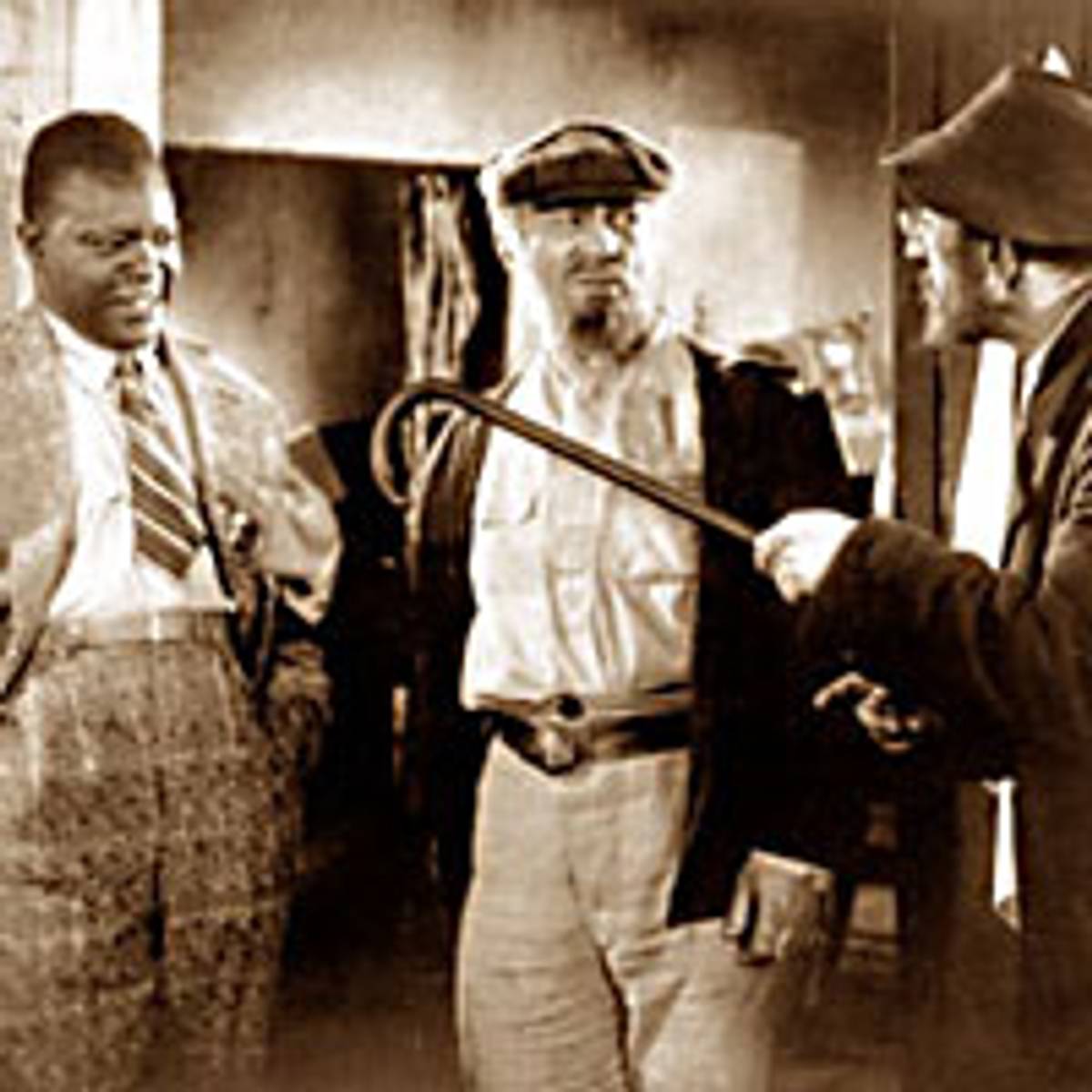
Jim Hoberman, senior film critic of the Village Voice, introduced the screening of The Return of Nathan Becker. Because he was not able to stay for the Q&A after the film, he tried to anticipate viewers’ questions before the actual screening. The one question that he did not ask was “Why? Why show this film?” The quality of both the audio and video were terrible. The film makes no sense to the modern viewer, at least not to this one. Excerpts of the film might be shown as part of a survey of awful Soviet propaganda films of the 1930s, but it does not stand on its own. It is mystifying that Michoels was considered a film star. There must have been some underlying irony involved, pitting the Quasimodo-like Michoels against the godlike Soviet athletic types that were his co-stars. The actor who portrayed Nathan’s father looked a lot younger than Nathan himself. His portrayal was a horrible parody of a shtetl elder. Why give him a stutter on top of his shuffling, non-stop humming characterization? Unfortunately, the Yiddish version is gone forever. That would have made the film worth seeing for me, and I wonder if the Soviet types spoke Russian even in the Yiddish version. I kept hoping for some similarity to Potemkin but could never find it. The film seemed to be stuck back in the silent era, and maybe should have stayed there.
—Pearl Shifer
A ROAD TO MECCA: THE JOURNEY OF MUHAMMAD ASAD
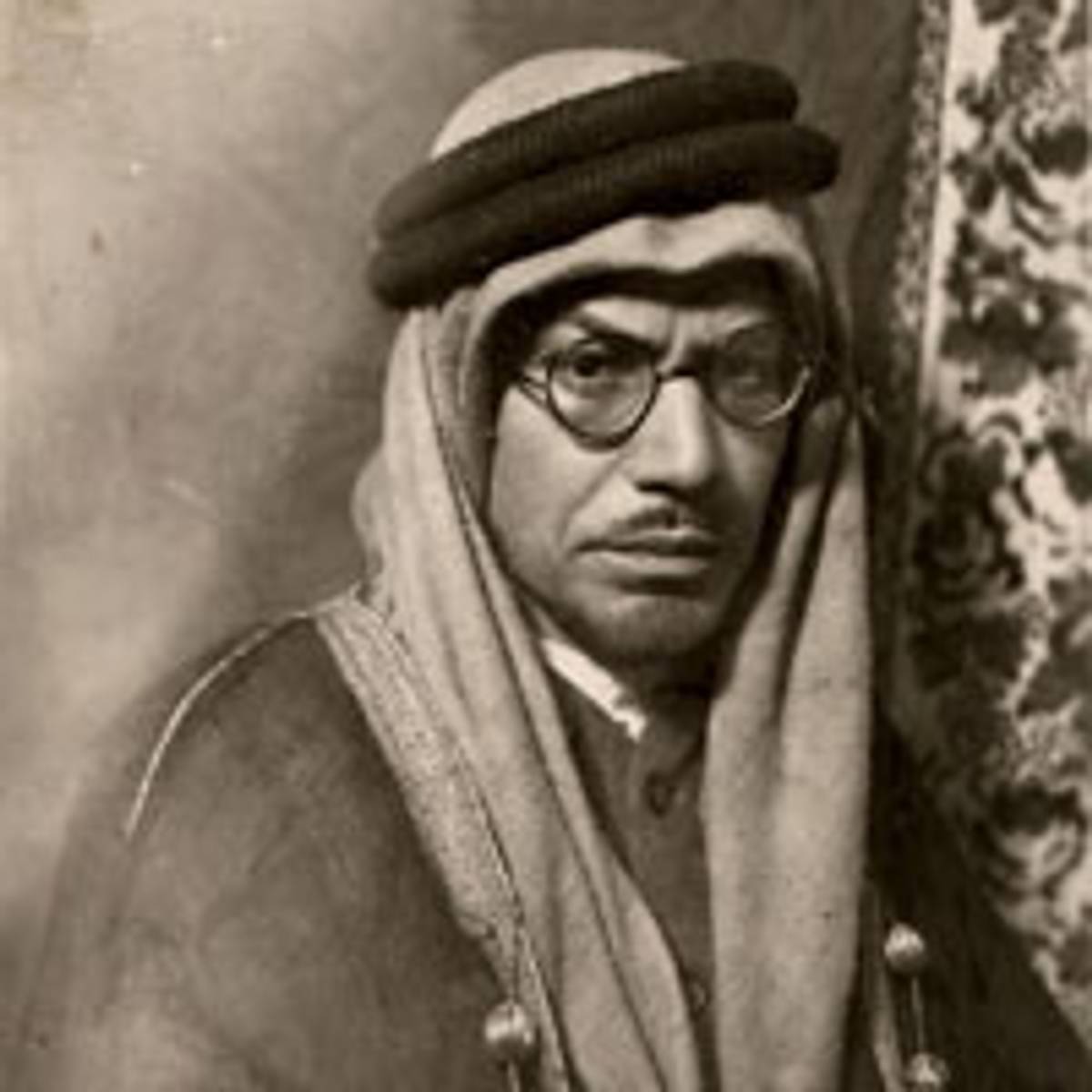
I don’t usually go to the movies to see a documentary any more than I choose to read non-fiction. I get enough non-fiction on the myriad news programs I watch on television.
But this is the season of the New York Jewish Film Festival, and coincidentally there is a hideous replay of the all too real war between Israeli Jews and Palestinians. I am preoccupied with the redundant, repetitive, and constant battling between these two peoples. Perhaps a documentary depicting the life of a Jewish man who converted to Islam might shed light on the constant and troubling conflict.
This biography tells of Muhammad Asad, born Leopold Weiss in 1900 Austria. Through interviews with his brother, with Pakistanis who knew his importance in the founding of their country, with women who remembered him, with people trying to find a place to post a sign to name for him in Vienna, the film attempts to reveal the wide-ranging importance of this mysterious and brilliant man. We learn through the interviews that he translated the Koran into English, wrote an autobiographical book, The Road to Mecca, and worked to promote the separate Muslim territory in India that became Pakistan in the same year as the Jewish state of Israel was formed.
I saw this movie on Inauguration Day, leading the German director of the film, Georg Misch, in his intro to the film to suggest that the film may be dated now. Perhaps he thinks our election of a man of such mixed heritage shows an American willingness to cut through stereotypes, which I assume was one his purposes in making the movie.
I don’t see the movie as dated but needing editing. The disparate interviews fail to convey what caused this Jew to become so identified with the Bedouins (which the movie shows as his first attraction to Islam) and their religion that he was willing to change his name and break with his family. For me the conversion seems so improbable that I could only jokingly remark that he must have been a Bedouin in a previous life.
Perhaps I would have gotten a better sense of this man and of the religion he so clearly was inspired by if the film had given us more of the prolific Asad’s own words. Since it is now typical of many documentaries to include the filmmaker’s response to his subject, I perhaps would have found Asad more comprehensible if Misch had provided his own reasons for bringing this person to our attention.
Misch has succeeded in piquing my curiosity about the man. I will have to find a copy of The Road to Mecca and his translation of the Koran. Shoot, I thought I’d accomplish a lot more by sitting in a 90-minute film.
—Hilary Salk
TWO LIVES PLUS ONE
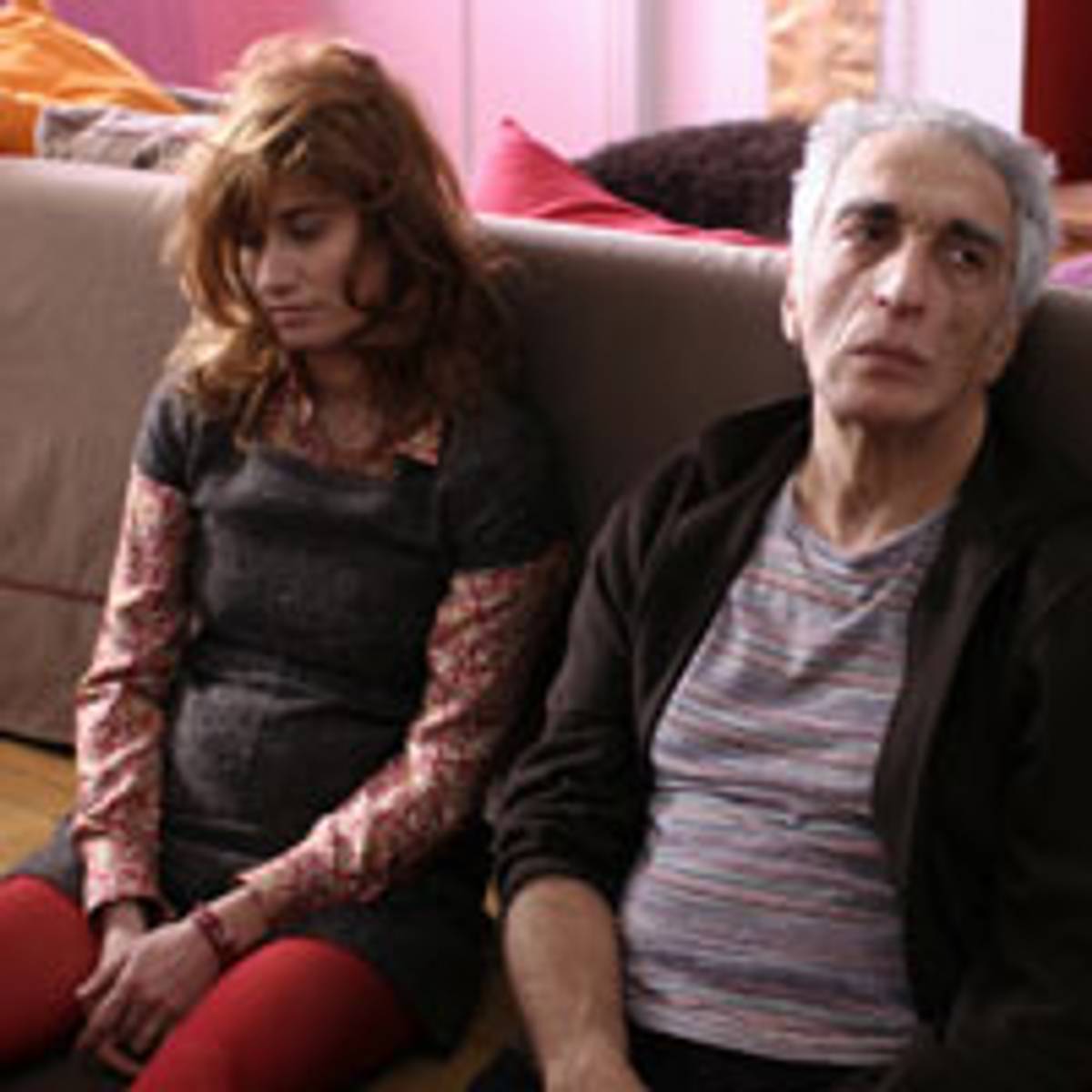
Deux Vies…Plus Une is a whimsical look at boredom and uncertainty around forty. The film’s New York premiere is part of the Jewish Film Festival at the Film Society of Lincoln Center. Idit Cebula’s feature debut is engrossed with the newly turbulent life of Eliane Weiss, played by Emmanuelle Devos. She has an attentive husband, a precocious teenage daughter, a job teaching pre-school, and an overly supportive/nosy family. We sort of already know where all this is heading. Interminable happy panoramas do not a movie make…
In no time Eliane is falling flat on her face after tripping up the stairs to her flat. This is one of many literal breaking, or rather falling, points in the film. Soon thereafter, all the familiar starts to grow oppressive. The husband becomes controlling, the daughter starts to rebel (but this seems more to get her parents’ often diverted attention), and the family turns into a nuisance. Nonetheless, conflict is a wellspring of great art. Propelled by her desire for something new, Eliane decides to finally consolidate the notebook collages she has been creating over the years. A new computer gives her purpose, and an overactive imagination gives her stories. Talking to her dead father on a regular basis is one source of inspiration, and a handsome, independent publisher slowly becomes another. The intentions of this rakish blond, David Klein, are never illuminated, but Eliane’s husband, Sylvain, perceives him as a competitor worthy of histrionic chest-beating and a dollop of self-pity.
Sylvain is a pragmatist. He sells kitchens, forages for food around the apartment, and persists with an untroubled veneer of easy charm. He is at first uninterested in Eliane’s new hobby, and then offers conditional support as the possibility of publication looms. However he is a family man first and as soon as the outside, corrupting influences enter their once placid domicile, he is apoplectic.
Gérard Dorman, who plays the husband, is a subtle presence. The camera is drawn to his fierce eyes and gesticulating arms, but the story is truly about Eliane’s passage through a second childhood. Devos’s performance is infectious. A regular in the films of Arnaud Desplechin, her character here flits from morose to blithe to mischievous and back again. This is heavy lifting for the actress and the audience, but we follow without protest, for the journey is so revelatory. The film is about all the little things we take for granted, like a hug from a child, the obligatory check-in call from a parent, and the partner who shares our pillow at night.
The buoyant score by Arthur Higelin is Eliane’s unspoken accomplice as she traipses through the city on her bike. The upbeat, punctilious chords suggest freedom and curiosity. This small film and its big actress share the same flamboyant spirit with the iconic characters created by Mary Tyler Moore and Valerie Harper in the 1970’s—women blazing their own mercurial path, societal pressure be damned!
The writer-director also inserts herself into the narrative as a successful author and mentor for Eliane. In fact it is her recommendation that leads to the publisher and possible extra-marital temptation. Cebula identifies with the pressures Eliane must endure. As a mother, a wife and a daughter she is just looking for a little piece of herself before there is nothing left. During a Q&A after the screening, the director alluded to this bond she shares with the protagonist. As a female artist there is a constant search to define a space in which to be creative. However this need can unsettle the traditional hierarchies and leave one rootless. By the end of the film, it is still unclear whether Eliane has mastered the collage of her own life, but she has undoubtedly gained confidence from the foray into the unknown.
—Wayne Titus
The main character in this gem of a film happens to be a woman, which may lead some to consider it a “woman’s” film, simply one more in the long line of feminist works. Such a view would deny both the appeal of this work of art to males of all ages and the universality of the profound issues on which this moving picture touches.
One critical issue that must be addressed at the outset is how to explain the title. Which lives are the “two lives” and which is the “plus one”? The answer to these questions may be found in an analysis of the significance embodied in a line spoken by Eliane’s father while she is communicating with him at his grave wherein he responds to some of her concerns with the observation that there is a great cost in establishing one’s own freedom (thereby implying that not all of us are willing to pay the necessary price).
Some might argue that the “two lives” are represented by Eliane and some member of her family (perhaps even her deceased father)—or that her publisher is somehow included. However, it seems more in keeping with theatrical devices that the ghost or mental image of her deceased father with his advice and observations is more reminiscent of the Greek Chorus. Most of her other family members and friends are essentially one-dimensional stereotypical characters.
It seems more plausible that a more accurate view is that the “two lives” are as follows: (1) Eliane’s past life within the institutions of society (marriage and the family, religion, education, etc.), and (2) her present life as an aspiring author which has her pushing the limits of her previous institutional fetters, but which may have their own institutional restrictions and which provide no certainty of future success.
What, then, is the “plus one”? The “plus one” is her future life: free, but uncertain; seeking to provide meaning, purpose and direction to her own future—which one must provide for oneself without submitting to loneliness, or anxiety, or becoming forlorn; hopefully able to escape becoming a victim of Durkheim’s anomie.
Therefore, “two lives plus one” represents her past and her present merging into her future, a new life reflecting the existential difference between the static concept of “being” and the new dynamic understanding of “becoming”—equal to the awareness of the continuity of change and the certainty of uncertainty—with no guarantees but with high hopes.
Indeed, Eliane’s purchase of a computer is symbolic of the increasing power of the individual to shape her or his own destiny and also influence the course of the history of the future as was recently demonstrated in the Obama campaign for the nomination and victory in the election for the U. S. presidency.
In this connection, the author/director has created a work of film art about the history/culture of the future in keeping with the efforts of artists and philosophers currently exploring and grappling with the knowledge and ideas arising out of the implications of, for example, Moore’s Law, Ray Kurzweil’s works on Robotics, and Lester Thurow’s prediction foreseeing the current financial crisis more than a dozen years ago.
—Jules S. Zimmerman
WAITING FOR ARMAGEDDON

The documentary Waiting for Armageddon depicts the serious threat that the Evangelical Christians’ belief in the immient Rapture with all of its death and destruction is to Israel and the Jewish people. The producers, who conducted a Q&A after the film showing, have so effectively and objectively presented the ideology of these fundamentalists as to engender a question from an audience member: “Why did the film committee choose to show this film at a Jewish film festival?” The woman’s question metaphorically captures the subtle danger in the Evangelical support, politically and finacially, for the state of Israel. Waiting for Armageddon, a well-done documentary, needs to be seen by all conscious people, Jew and non-Jew, who are concerned about the state of Israel and its impact on the world at large.
—Dorothy Eagan
Standing contrite for civil ignorance, I am obliged to ask myself: how in flaming tribulation have I not heard of these things called Evangelical Christians? Like, really heard? I mean I know that pretty much everything on the news is news to me until one of my humorous rags wipes it up for joke fodder. But at 50 million strong, how could I have missed them? With everything in me Seinfeldian, who are these people?
Fortunately, I didn’t even have to wait 30 seconds for the answer: they walk among us. And not just below and between us in that wasteland between New York and LA, but above us—often way above. Waiting for Armageddon explores the connection Christian fundamentalism has to American foreign policy because yes, there apparently is one. Take the first jarring Petri sample, a married couple of military jet propulsion engineers. These people have jobs so complicated (involving words like “algorithm” and “coding”) that my ears glaze over just listening to their descriptions, mistaking them a good distance from the twanging backwater stereotypes I would usually associate with a Biblical interpretation like “I take him [Jesus] at His word”. That is, His literal, apocalyptic word.
So who cares what these paradoxi do and think outside of the lab? Well their kids for one, since their deceptively employed parents are expecting the world to end so soon now that they don’t expect to see any grandchildren, or even necessarily graduations or weddings. Though surely banned from such households in his day, Marilyn Manson could never have trumped the nihilistic doom-saying of these moms and dads spanning classes and Cletuses alike. Believers cite issues like disease, poverty, homosexuality and Middle Eastern strife as obvious revelatory harbingers as if the same haven’t been perennial ebbs since the onset of civilization. Even kids going blindfolded and ear-plugged through 18 years of public school (95, 96%?) have still heard of things like the Plague, the Inquisition or the early American meat-packing industry. If Hitler, Hirohito or American Apparel were not definitive antichrists, then who would be?
While characters like Ted Haggard might tempt a fundamentalist dismissal, we are confounded to learn that they in fact globally reach 200 million every week in 77 languages on 40,000 radio stations, have inveterate roots in all 3 government branches and are “more powerful than ABC, CBS and NBC together”. Such affiliation sheds new light on the mystery of how a war for oil might leave us with none; because as wrong as it sounds as a motive, it looks perfectly feasible next to claiming strategic import for Armageddon’s final battle between the forces of good and evil.
Greed, though unethical, is understandable. As alarming a vice as it is for which our national leaders to be personally motivated, even the self-interested have progeny whose existence they’d like to continue. But to be flouting sustainability for a 4-step plan involving a wipe-out and rebirth of life on the planet is little more than a drawn-out version of suicide-bombing your way to 40 virgins. How pastors of the former can call the “Islamo-fascist” latter a culture of death and purport to be the opposite while lobbying to ignore environmental issues because it’s all part of “stage 2” and according to plan should be pricking up the ears of every rational human in the country who is in favor of its prolonged survival. There is a difference between waiting patiently for an apocalypse and bringing one about yourself.
—Joy Goldstein
Oy vay ist meir, with friends like these, who needs enemies? Once more I view a documentary filled with threats (this time unveiled) to Israel and to the Jewish people. The end is near, according to the evangelical millions in the film. These are the 20 million or so Americans who believe in the literal truth of the Bible. The end is near, and they are looking forward to it because, get this, they are going to be taken up into the clouds in the Rapture, with Jesus present in the flesh. These believers, the dead and buried religiously correct Christians, and a specific numbers (I’m not good at remembering numbers but it was definitely under a million) of Jews who have converted to belief in the messiah, Jesus Christ, are going to escape the Armageddon that remains for the rest of us.
Oh, yes, the rest of us will die in the most apocalyptic of wars, natural disasters, and hatred, while the believers will escape into the cloud. The only real obstacle is that a magical number of Jews must give up their stubborn disbelief of Jesus Christ.
The ultra-fair directors of this scary movie took out anything that would make these believers seem funny. They followed one very scary couple who work in a bomb factory and feel very sure that the world will be destroyed by the very likes of the technology they are helping to create. I have not been living under a rock for the last eight years (though I wished I had been) so I’ve heard about the rapture and feared that Bush’s environmental policies and ignorance of the threats to the planet of global warming and his willingness to kill all treaties on nuclear containment were rooted in his belief that the rapture was near and that he was going into that cloud.
The people who chose films for the 2009 New York Jewish Film Festival selected this film as important enough to be the closing-night film. I can only hope that the inauguration that took place during the festival run is a sign that we are returning to a more earthly sensibleness. I appreciate that the filmmakers were so respectful and found people within the evangelical movement to offer critiques of their fire and brimstone comrades. Still I found myself left with an uneasy feeling as the film reveals no practical approaches to combating this frightening, large and influential group of Americans who are lost in a false and complacent sense of the future.
This is not the only film I have seen which warns of the influence of Christian fundamentalism. James Caroll, author of Constantine’s Sword, narrated a film of the same name, which revealed how Evangelicals have infiltrated the Air Force Academy in Boulder, Colorado. This film reveals the fears of three generations of Jewish Air Force academy graduates about the dangers of this point of view. However, here we see action taken to combat this threat to American ideals of separation of church and state. The voice of James Carroll’s anger and articulate criticism of religious intolerance and fanaticism offers a much more grounded approach to the threats that these American radical believers pose.
I looked around to see if others were as roused with fear as I was. On either side of me two people were in a sweet snooze. Being objective about such a threat didn’t put me to sleep. I only felt dismayed by a nation of people that can be so simple that they fall for the dream of a coming of Armageddon.
—Hilary Salk
YIDESHE MAMA
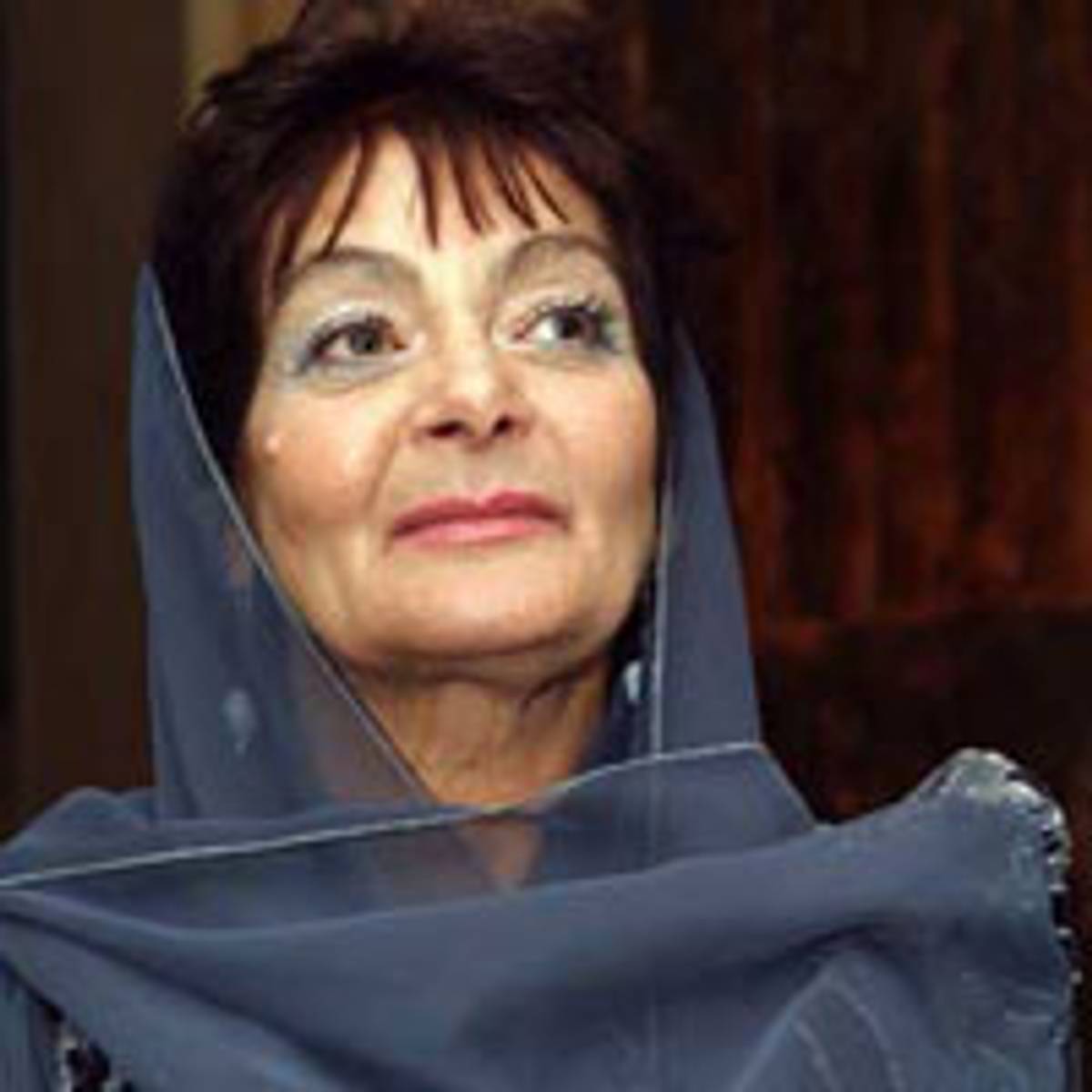
We first encounter Gennady Kuchuk in a dark room, looking like he’s about to engage in some kind of illicit activity. It turns out that he’s got a cell phone in his lap and he’s calling his mother. He puts her on speakerphone so we can hear the onslaught of whining when he announces that he’s getting married. Gennady and his fiancée, Nurit, have been together for four years, but according to his mother, Zina, “It’ll never work.” Why? She’s not afraid to tell us. Because Nurit is Ethiopian, and Zina had in mind for her son if not a Russian, “at least someone who’s white.”
The promised couple is likable enough, going about their wedding planning business. Nurit tries on a dress, smiling goofily at herself, as if she can’t quite believe she’s doing this. The diffident Gennady lets himself be talked into an expensive suit. After choosing a less than posh venue for the reception, they joke about the story they’ll craft when people ask where they got married. There’s a kind of fairy tale perfection to Nurit and Gennady’s relationship, but it’s never Hollywood mush. When Nurit says, “Things are great between us and we love and respect one another,” you trust that it’s true. But as happy couples can be, Gennady and Nurit are a little boring.
Yideshe Mama is a documentary (Kuchuk co-directed it with Fima Shlick), but it feels more like a very understated romantic comedy. The action unfolds slowly between the characters, and only occasionally is there a direct address to the camera. If a good documentary compensates for what it might lack in story and sex appeal with straight talk and a real sense of intimacy with its subjects, this one doesn’t quite deliver. But what does provide an interesting layer to the film is the fact that Zina Kuchuk is playing herself. As much as she seems like a caricature of a Jewish mother, this is her, or at least the version of herself that she is willing to reveal—racist, meddling, hypocritical, though not without a sort of absurd charm.
“The eyes will eat her alive,” Zina cautions against Gennady bringing Nurit home, but we get the sense that Zina’s green-shadowed eyes would be the only ones watching, her eyebrows plucked in stern surprise. When Gennady shows her the box of 400 wedding invitations, Zina carps, “You should have a small wedding. Twenty is enough.”
Eventually, not to be left out of things, she decides she’ll attend the wedding, and “accidentally” invites some friends from the neighborhood. She takes her turn in front of the mirror at the bridal shop. But when she wants to model her dress for her husband—“It will take five minutes,” she urges—his dismissive response is crushing. He’s willing to go along with his wife in her crusade against the marriage because she’s the boss. Still, that doesn’t mean he loves to look at her.
Not much happens in this film; there are no real surprises. The entertainment here is to see what ridiculous, small-minded thing Zina will say next. It’s a portrait of prejudice, the kind of prejudice that defeats itself. On her wedding day, Nurit’s Ethiopian family dances joyously, while Zina hovers at the edge of the dance floor with her wary smile. She’s no real threat this Jewish mama. She’s just sad.
—Polly Rosenwaike
YOUNG FREUD IN GAZA
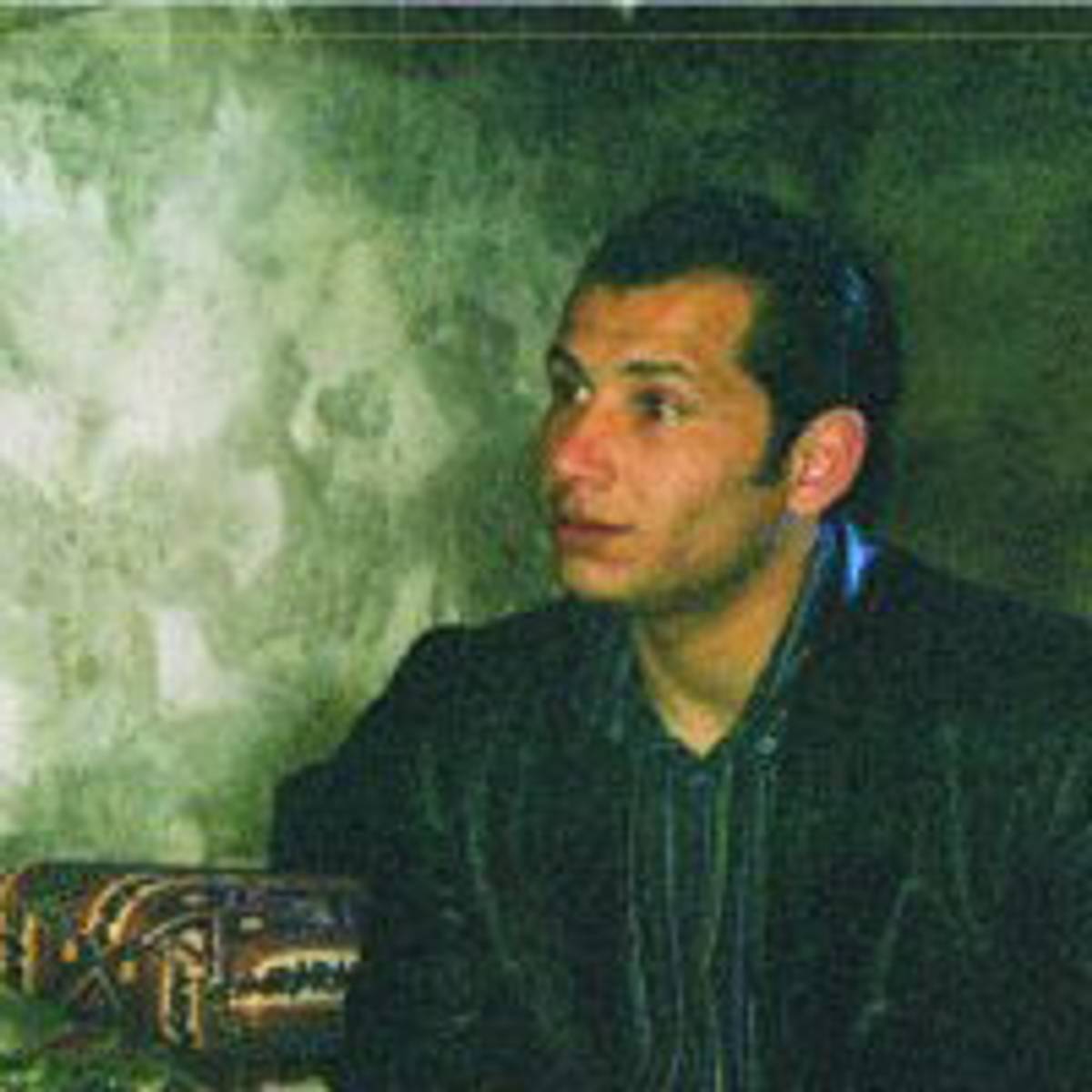
When “young Freud” describes his home as a place that needs a million psychologists, he does so with a disarming lack of irony. One must wonder what a hell-on-earth bomb magnet like Gaza can need with anything above the bottom level of Maslow’s pyramid, what a brain-picker can hope to do for the minds of a society justifying destruction of said brains in exemplary honor of martyrdom. It could almost found a twisted sitcom, if it wasn’t the basis for this very real and very chilling documentary.
Ayed is a 28-year-old Palestinian therapist attempting to restore the mental health of his fellow embargoed citizens. The story follows him as he makes house calls to and reflects directly on four particular patients and other various support groups amid the civil turbulence of the Hamas-Fatah conflict.
As could be expected, Ayed’s is not the kind of indulgent probing of the bourgeois subconscious luxuriously typified in Woody Allen’s urbanopolis: it seems unlikely that even the most rudimentary of psychoanalytic techniques need be utilized to detect the prevailing malady. An intensity of nightmare too horrific even for Oprah is the rule, not exception in the Strip—the average Gazan need dig only as deep for her issue as she must through a leveled home for obliterated loved ones.
To be sure, some patients make ostensible progress within the course of the sessions: a young woman suffering post-traumatic anorexia after seeing a dead girl outside her school when she was a child credits counseling with her own evasion of suicide. At least one now-legless former Hamas militant appears profoundly relaxed after a meditative exercise, as does the surviving perp of a botched terrorist attempt on an Israeli disco (even with a tangerine-sized crater in his forehead, his complaint of “my mind is somewhere else” is meant to be figurative). But even the latter expresses moral ambivalence about his experience, regretting and un-regretting the failure of his paid assignment to murder civilians. Another young woman, after witnessing her husband violently killed in a car explosion, struggles constantly with fears of death while facially being so shrouded by burka that she looks herself like a wraithy specter. Like most female clients, she is not allowed to meet alone with the male doctor and is eventually obliged to cease treatment altogether when she is engaged to be remarried and claims to be cured—her face, of course, unreadable.
With the task of healing adequately Sisyphean, Ayed does not seek to correct any consciences, assuming he even deems any to be flawed (while refusing to take a factional side, he does lament his brethren’s self-destruction in lieu of uniting against Israel—perhaps forgetting the descent of his namesake, Sigmund). The film’s most harrowing moment occurs during group therapy for children when the breathy, irreproachable voice of a little girl describes proudly the end of her martyred cousin: “he was hit in the head and his brain poured out…thumbs up!”
Surely courage is required by both doctor and patient to turn to a talking cure when the encroaching city is constantly screaming in your face to pick up a stone. It must be difficult to maintain neutrality in such a fractured population—almost as difficult as spending two years in the Middle East making a documentary that isn’t political. Both feats command esteem and achieve their respective goals of giving voice to the non-extremist who remain privileged enough to have needs above the desperately corporeal and fortunate enough to have them addressed.
—Joy Goldstein
Another day, another documentary. This film follows Ayed, a young Palestinian psychologist, attempting to be of service to the men, women, and children of Gaza. Meanwhile the background of political chaos and poverty conveyed the mean streets and domestic deprivation of the people. No amount of personal counseling no matter how skilled could do much good in the wake of such a degraded and impoverished environment.
The directors (PeA Holmquist & Suzanne Khardlian), who spoke after the film, said their objective for the film was to show the diversity of the individual life experiences and to avoid a political statement. However, that background kept confounding their intention. In addition, at the time of their filming, followers of Hamas and Fatah were embroiled in warring against each other. Given the current realities of December 2008 and January 2009, this in-fighting seems like the distant past. Their good intentions were blown away by the real politics that none of us could escape.
This film does give a wrenching portrayal of the tragic lives of the subjects it follows. We watch Ayed as he counsels a young girl with anorexia whom he sees once a month. Each time we see her, she is more and more skeletal. He uncovers that she has a seen a young girl dead when she was a very young child. While she appreciates Ayed’s attention, his youth and inexperience and the sheer limits of counseling seem painfully inadequate. We follow many other devastating stories and marvel at the way in which Ayed carries on with his efforts to help calm people using deep breathing and listening as his only tools. Knowing the wreckage of Gaza in the past month, I could only wonder at “the finger in the dyke” that Ayed’s methods provides.
I had recently read an article in the New York Times science section of January 6, 2009, written by James Gordon, a psychiatrist, who works with a team of 90 professionals trained to works with traumatized children and adults in Gaza. The last sentence quoting a Gazan mental health worker helped me put this film’s message into perspective: “In our Scripture, it is written that when you don’t have hope, you look for it in the face of your friend.” Ayed was that friend.
The directors were able to accomplish the objective of giving me a feeling of connection to the individual lives of the people whose lives they followed. I wonder whether some of them were killed or maimed. I would like to know and I wouldn’t.
I was relieved to hear the directors report that Ayed was out of the country when the bombs began to drop in Gaza and he was unable to return. What he will return to seems even more hellish than what he left. After seeing the film, I am aware of needing to find hope in the face of friend. Mine is gone.
—Hilary Salk
These articles are not currently attributed to anyone. We’re working on it!